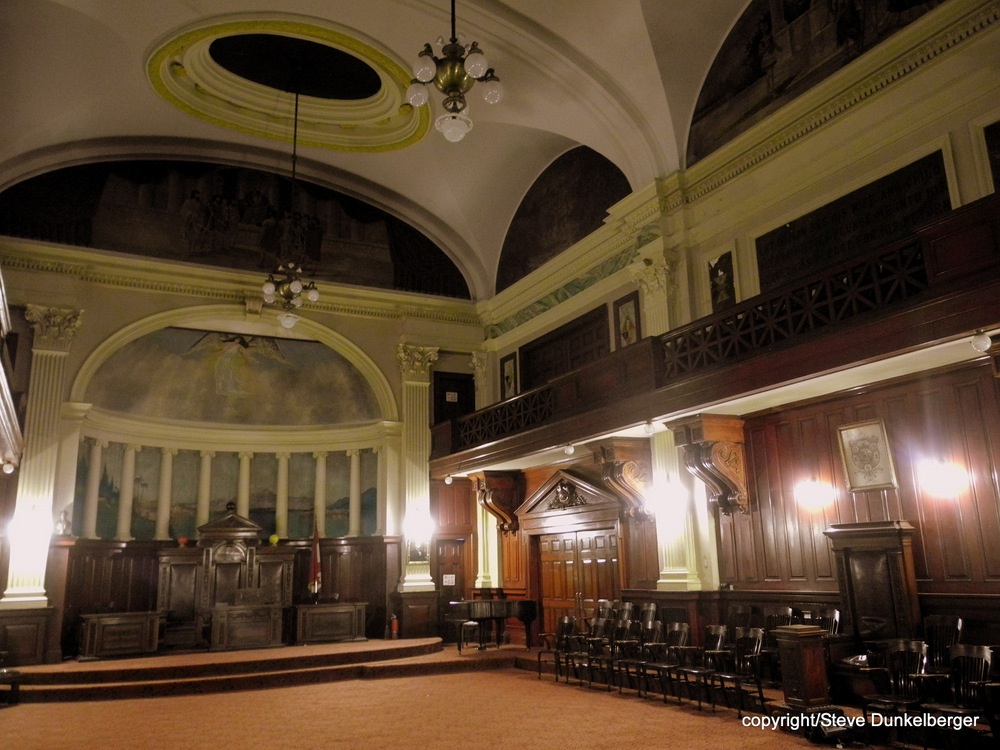Largely hidden behind sandstone slabs and brick walls, Tacoma’s Pythian Temple offers a glimpse into the city’s history and a little-known fraternal order that looks toward the future.
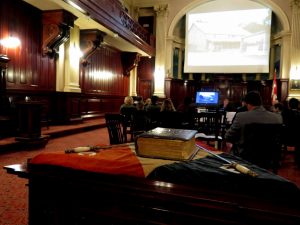
The building dates back 110 years and remains virtually unchanged since it was dedicated in 1907. For a moment, flash back more than a century to understand a place where time has largely stopped.
Residents of what were then two boomtowns, New Tacoma and Old Tacoma, organized the area’s first Knights of Pythias lodge in 1881 as a way to tap into the rapid growth of pioneer towns due to the arrival of the Northern Pacific Railroad. The Knights of Pythias was a relatively new fraternal order at the time, having been founded in 1864 by Justus Rathbone to promote “friendship, charity and benevolence” in the waning days of the Civil War. After gaining the full support of Rathbone’s friend, President Abraham Lincoln, it was the first fraternal order chartered by Congress.
The secret society has its own rites, rituals and symbols that are known only to its members and draws its name from the Greek tale of Damon and Pythias. Pythias was captured by Dionysus, the tyrant of Syracuse, and sentenced to death. Dionysus, however, allowed Pythias to return to Athens to visit his ailing wife as long as Damon remained a hostage to guarantee Pythias’ return. Dionysius believed Pythias would never return, breaking his oath to give his life for his brother-in-arms. But Pythias kept his word and returned for his appointment with the executioner. Dionysus was so moved that he released both men. It is a story of brotherhood the country needed to heal the wounds of the “house divided” during the Civil War.
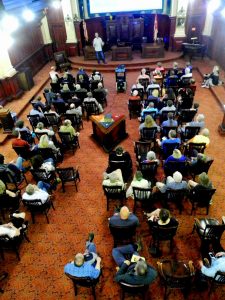
Prominent charter members of Tacoma’s Knights of Pythias Commencement Lodge No.7 included Howard and Anthony B. Carr, sons of Tacoma’s first settler, Job Carr; W. P. Bonney, who would later write three volumes on the history of Pierce County and E. O. Fulmer, who was elected New Tacoma’s first city marshal. It was soon decided the Pythians needed a grand building, so the order commissioned Fredrick Heath in 1906 to replace its wood-framed building with a stone and mortar structure. Health was already a noted architect, mostly noted for his redesign of the Tacoma Land Company Hotel into Stadium High School at the same time he designed the Pythian Temple.
The cornerstone of what would become the four-story Pythias building was laid on July 31, 1906. At a cost of $55,000, the Pythian Temple was dedicated on May 21, 1907 and has been in continuous use ever since, not only as a meeting place for the fraternal order, but as a repository of the membership records, documents and Pythian artifacts from around the state that are currently being cataloged and archived.
The outside of the Italian Renaissance Revival Style building, which most Tacoma residents walk right past with little thought, offers a façade of sandstone quarried from Wilkeson, four Corinthian columns in nearly full relief recessed at the central bay and arched niches that were intended for statues of Damon and Pythias that were never installed.
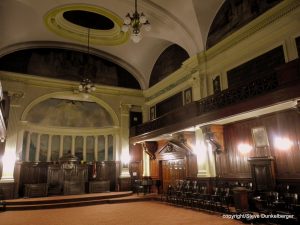
While impressive on the outside, the lodge’s true splendor lies within. Its grandest room, known as Castle Hall, offers 35-foot vaulted ceilings, three elliptical skylights, mahogany panels and ornately carved furnishings that date back to the building’s construction. Watercolor-on-canvas murals along the ceiling portray the tale of Damon and Pythias. They were painted 110 years ago by scenic artist Carl Reyna, who was paid $35 per panel for his efforts. The century-old light fixtures also offer a glimpse into the lodge’s history since they provide both electric outlets and gas lamps – just in case the “new technology” of electricity did not gain popularity.
Adjoining the Castle Hall is the former dance hall, complete with polished hardwood floors and a raised area for bands and performances. It is currently used for activities and meetings, primarily by the Pythian Sisters. The top floor includes a full dining room and kitchen that is used for lodge receptions, dinners and breakfasts that are open to the public.
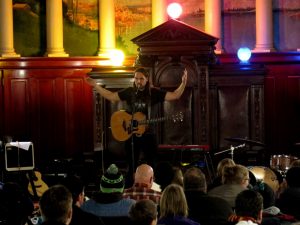
The lodge’s Club Room offers historic photographs and relics of Tacoma’s notables, century-old pool tables that are still in use and a Carom table, a Billiards table without the side and corner pockets. The object of Carom is to score points by bouncing the cue ball off the other two balls on the table rather than sink them as in traditional billiards.
The building’s other floors are home to the Tacoma Youth Theatre and Seabury’s middle school program.
The lodge’s membership is not only tasked with maintaining, preserving and presenting the Pythian Temple, but also keeping its rites and rituals alive for future generations. The lodge is open for public tours at 6:00 p.m. every Monday and by appointment through its Facebook page.


































